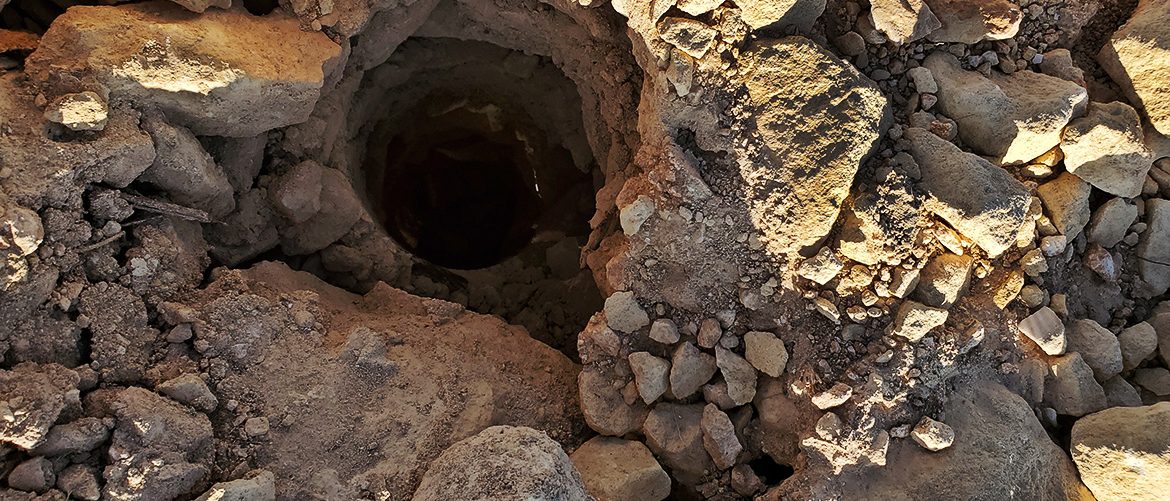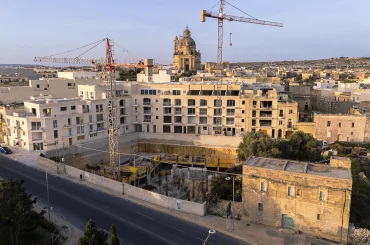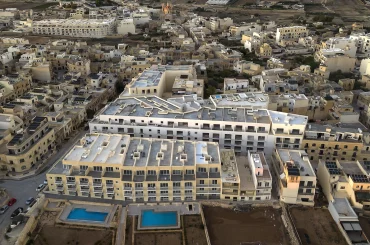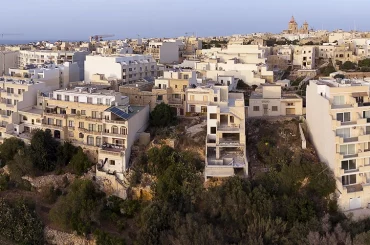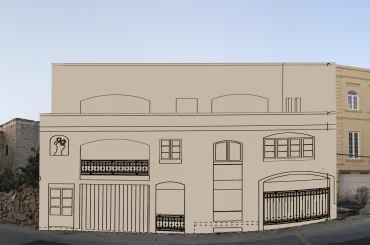Around a dozen large-diameter PVC pipes embedded in a rubble built by Sannat local council using EU funds for habitat restoration were hastily removed last Thursday, a few days after the police launched an investigation.
This website revealed the presence of the pipes, which were concealed within the wall, ten days ago. The police launched an investigation after receiving a letter by 4 NGOs.
Sannat’s mayor Philip Vella, responding to question on whether he had authorized anyone to remove the pipes and whether it was appropriate to destroy evidence now that there is an ongoing police investigation, said that he “did not order anyone to do anything”.
He added: “The council never gives any orders for illegalities to take place and if third-parties are responsible that’s another matter.”

The pipes, which were deeply embedded in the wall, were hoisted up with crane.
The 120-metre-stretch of wall built by the council runs between a dirt road and a strip of land that belongs to Excel Investments Limited, owned by property magnate Joseph Portelli and two of his partners, the Agius brothers and Daniel Refalo. Excel has been putting one of Gozo’s largest-ever residential projects on part of its land – around 150 flats have been granted permits or are being processed – and carried out various works on the rest of its land that stretches to the cliff’s edge.
The project has become one of the most contentious, and every part of the project granted permit is now subject to appeal either by the NGO Din L-Art Helwa or Moviment Graffitti.
This website revealed the illegal works that took place on the land that runs to the cliff’s edge last February. This included extensive rebuilding of rubble walls, spreading rubble near the cliff’s edge, six structures that the Planning Authority said were shaping up into corbelled huts, and dozens of PVC pipes embedded into the wall at regular intervals. The PVC pipes started from part of the section built by the council and continued throughout the rest of the wall to the cliff’s edge, mostly on land highly protected as Natura 2000 and Special Area of Conservation.
The council-built section that had PVC pipes within – all removed last Thursday – runs past a field purchased by Marlon Mercieca from Excel last summer, who then applied to build 4 stables. Yet the PVC pipes all throughout the wall suggests that everything is linked in the larger scheme or project.
The police’s investigation was launched after four NGOs wrote to the Police Commissioner requesting an investigation into potential collusion in the placement of the PVC pipes in the council-built wall, which is funded by EU (80 percent) and public funds (20 percent).
The PVC pipes have now been removed from part of the wall built by the council as well as the rest of the wall.

At least two of the faux corbelled huts have also been knocked down in recent days.
Meanwhile, the planning application for stables has hit a snag: the Planning Commission has asked for the application to be “republished”.

Multiple farmers who spoke to this website said that a large-diameter pipe for supply of water that emerges from underneath the wall built by the council at the site of the proposed 4 stables has been used by one or more than one farmer to fill water reservoirs.
This website asked the mayor Philip Vella if the council is paying for the water supplied through the pipe, which runs under the wall built by the council and is presumably connected to the mains, and whether that is legal. He said: “With regards to the water pipe, I have no idea what you are talking about.”
This website also wrote to Anthony Camilleri, the director of the Managing Authority that is responsible for administering EU rural funds. He was asked to specify the date that officials from the Managing Authority visited the site to inspect the works, and whether they saw the pipework. He was also asked about the issue of planning permit: evidence suggest that the council demolished and then built the wall anew, something that requires a planning permit, yet the council did not apply for a permit. Failure to apply for a planning permit runs against the rules on rural funds.
Camilleri did not reply.
Donate to Investigative Journalism
Robustly researched, professionally delivered, and sustained journalistic investigations published on this website make a difference – and take much time, effort, and resources to produce. Victor Paul Borg relies on donations for income and to fund journalistic investigations. This website's donation setup itself is uniquely transparent, with targeted amounts that allow tracking of donations in real time on the page. Contribute as little as €5 to sustain active journalism that makes an impact.

